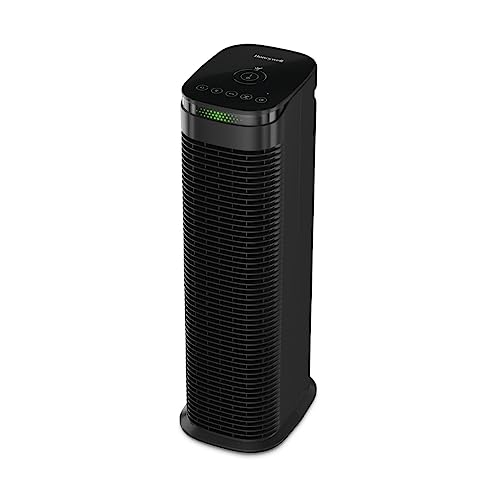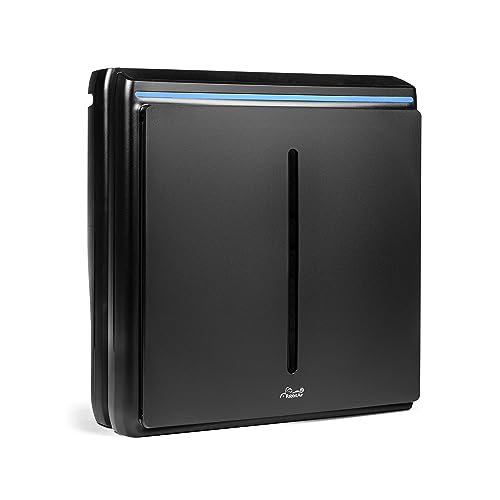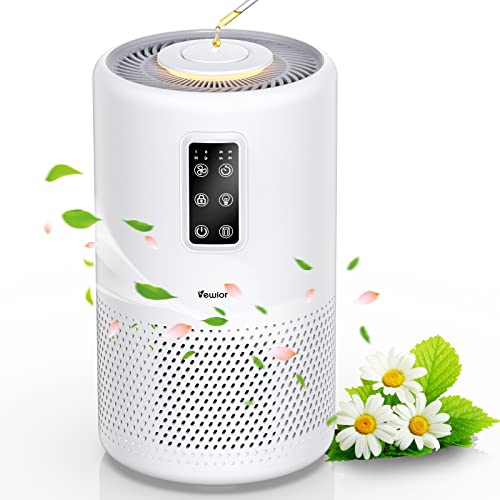This Article is Updated on – 09/07/2023, Originally posted on – 14/10/2022
Primary and secondary pollutants are categorized as air pollutants depending on their formation and source of emission.
There are numerous types of air contaminants, some of which are problematic, depending on their natural and manmade origin.
National Ambient Air Quality Standards (NAAQS) ensure, following the Clean Air Act, that air pollutant formation-dependent sources are taken into account to protect public health and safety from these diverse air pollutants (1970).
In today’s Know Your Facts, we will discuss what this Primary and Secondary Pollutants categorization is and how existing air pollutants are categorized based on it. Read and enjoy the content.
Table of Contents
What is a Primary Pollutant?
A primary pollutant is a type of air pollutant that is created principally from any kind of source after it is released into the atmosphere.
The vast majority of primary air pollutants are quite stable and are the primary reason for the production of secondary air pollutants.
As a result of this secondary sort of indirect activity, these air pollutants have the potential to influence a wide range of living beings.
Control of primary air pollutants can be achieved by getting to the source of anthropogenic emissions.
The following is a list of the primary pollutants:
1. Carbon monoxide (CO)
Carbon monoxide is a colorless gas that is very toxic, odorless, tasteless, and combustible. It is produced during the burning of carbon when there is a decreased quantity of oxygen.

This main gas is commonly referred to as a “silent killer” due to the dangerous effect it has on our respiratory system.
It was primarily produced by the majority of the unregulated combustion system, which had a smaller intake of oxygen. More importantly most of the air pollutants can be removed using car air purifiers more effiently.
2. Sulfur dioxide (SO2)
After the burning of sulfur, one of the stable oxides that are produced is sulfur dioxide.
This oxide is produced by sulfur-containing sources such as fossil fuels, volcanic eruptions, and many other sources.
This main air pollutant is one of the principal contributors to the formation of acid rain, alongside nitrogen oxide.
3. Nitrogen oxides (NOx – NO/NO2)
Nitrogen oxides are among the most reactive oxides in the atmosphere, and their harmful effects put them ahead of a large variety of other secondary air pollutants.
In addition to internal combustion engines, other sources of NOx generation include industrial boilers, cement kilns, and turbines. In the same way, as SO2 does, NOx also contributes to the formation of acid rain.
4. Ammonia (NH3)
After being generated through livestock waste management and the creation of fertilizer relatively frequently, NH3 is known as a major air pollutant despite the fact that it is odorless and has no color.

This pollutant is responsible for several secondary pollutants.
5. Particulate Matter (PM)
The creation of particulate matter, a known air pollutant, is related to both the primary and secondary categories of air pollution.
The vast majority of primary particulate matter is produced as a result of building sites, dusty roads, wildfires, wood burning, gravel pits, agricultural activities, and a wide variety of other causes.
6. Volatile Organic Compounds (VOCs)
The vast majority of volatile organic molecules are chemical products, and they are most frequently discovered at high levels of volatility in either domestic or industrial settings.
Paints, wood preservatives, aerosol sprays, paint strippers, and other solvents are a few examples of products that contain volatile organic compounds (VOCs).
Main Sources Behind Primary Air Pollutants
1. Industrial Exhaust
The following are some of the principal sources that contribute to primary air pollutants.
The contribution of different industries to the pollution of the air varies according to the emissions made by such industries.

The vast majority of economic sectors have some sort of interaction with chemicals, petroleum byproducts, energy, or food.
The majority of these businesses get their power from coal, gas, and other forms of petroleum, and in the process, they send a great deal of pollution into the upper atmosphere as waste products.
2. Emissions from Motor Vehicles
The combustion processes in the majority of automobiles’ internal engines employ petroleum fuels, which results in the emission of a greater quantity of CO, NOx gases, and particulate matter into the atmosphere at an enormous level.
3. Fertilizers
The majority of the air pollution that is caused by agriculture is in the form of ammonia. This pollutant is released into the atmosphere in the form of gas when excessively fertilized fields and manure from livestock are burned.
Fertilizers have a direct impact on the contamination of water bodies, such as eutrophication, in addition to their contribution to the greenhouse effect.
4. Wildfires
The majority of wildfires are caused by higher-than-normal temperatures in the atmosphere, which is a seasonal phenomenon.

In addition to the activities of humans, factors such as lighting and the rubbing of branches against one another as a result of the wind can cause wildfires, which then release tons of volatile organic compounds (VOC), nitrogen oxides, carbon monoxide, and particulate matter into the atmosphere.
5. Power Generating Plants
The release of hydrocarbons into the atmosphere is the fundamental source of the photochemical smog effect, and power plants all over the world are one of the primary contributors to this release of hydrocarbons into the environment.
Certain hydrocarbons, such as soprene and isoprene, which are emitted by these plants ultimately result in the creation of ozone. This reaction takes place relatively quickly in the atmosphere with hydroxyl radicals.
6. Volcano Eruptions
When volcanoes are in their natural condition, they contain sources such as sulfur, which, when they erupt, result in the emission of a significant amount of sulfur dioxide gas in addition to particle matter.

Smog is the unintended byproduct that results from the interaction of dust particles and SO2 in the atmosphere.
What is a Secondary Pollutant?
Secondary pollutants, in contrast to primary pollutants, are not produced through sources. The principal causes of these pollutants are the primary contributors to air pollution.
These pollutants, which have somewhat higher stability, are able to influence living organisms, albeit one that is capable of having an indirect impact on them via intermediate pollutants.
However, the major objective of these air pollutants is to harm the ecosystem. Controlling secondary air pollutants requires a complex strategy that involves avoiding the reactions that are caused by or between primary air pollutants.
The following is a list of the secondary pollutants:
1. Ozone
Ground-level ozone, in contrast to the protective conceptions we have heard about the ozone layer, is a fairly hazardous molecule and is formed when two major pollutants react in sunlight and stagnant air.
Ground-level ozone can degrade synthetic fabrics, produce fractures in rubber, accelerate the fading of dyes, and quicken the deterioration of some paints, among other things.
NOx and VOCs are the most prevalent primary pollutants that form ozone, which can be found in outdoor atmosphere slightly.
2. Sulfur Trioxide
After sulfur dioxide, sulfur trioxide is another frequent component that is responsible for the development of acid rain.

This pollutant, classified as a reactive one, is known to cause eye irritations and skin burns, and is toxic by inhalation. Additionally, it is formed through SO2, which makes it a hazardous substance.
When combined with water, SO3 gas can quickly produce sulfuric acid.
3. Sulfuric Acids / Nitric Acids
These acids are secondary pollutants by the SOx and NOx after they react with water.
These acids are quite common in acid rain and can be identified in both dry and wet acid deposition.
4. Particulate Matter
While there are primary sources of PM2.5 in the atmosphere, fine particulate matter can also be formed by the chemical and physical processes that operate on particles.
Directly emitting air contaminants into the atmosphere, secondary PM sources help produce or contribute to the formation of particulate matter (PM).

Because of this, we consider these pollutants to be precursors to the generation of PM. These secondary pollutants include sulfur oxides, nitrogen oxides, volatile organic compounds, and ammonia.
The levels of particulate matter (PM) in the environment are typically improved through control methods that cut down on the emissions of PM precursors.
Other than these common secondary air pollutants there are several air pollutants formed by primary pollutants like Peroxy nitrates (PAN), and Photochemical oxidants.
Impact Of The Secondary Pollutants
1. Enhancement of the Greenhouse Effect
The increasing greenhouse effect caused by pollutants such as carbon dioxide, methane, nitrous oxides, and water vapor act as a barrier to the fallen sun’s heat by preventing it from escaping outside.
This large increase in the interior temperature of the planet causes global warming. Which ultimately leads to Sea-level rise, the melting of polar glaciers, the loss of coastal land, droughts and floods, and a great deal more.
2. Ozone Depletion
The ozone shield is the region of the earth’s stratosphere that absorbs a significant portion of the sun’s extremely dangerous ultraviolet rays.
This absorption mechanism consists of an ultraviolet-powered cycle between ozone and oxygen. When most pollutant gases such as CFC, Halons (Cl or Br), and Hydrocarbons are emitted by an industrial process, the ozone layer is severely damaged.

Gases have gained access to the high atmosphere as a result of human activities; ozone interacts with these gases to generate patches that openly invite all destructive rays.
This phenomenon is referred to as Ozone depletion. In addition to their effect on the ozone, these UV radiations can readily cause skin damage and a variety of medical disorders.
3. Effect of Photochemical Reactions or Smog
The photochemical impact is comparable to July smog, as opposed to traditional wintertime smog.
Photochemical smog formation occurs when UV light from the sun interacts with the principal pollutant NOx (nitrogen Oxide) and secondary pollutants of ozone peroxyacetyl nitrates (PAN) and volatile organic compounds contained in the smoke.
In addition to its effects on humans, smog has direct effects on the photosynthetic process.
4. Acid Rainfall
Acid rain is an obvious consequence of secondary pollutants such as sulfuric and nitric acids. Acid rain can lead to a variety of problems.

Being exposed to acid rains, there are several repercussions, including damage to material surfaces, effects on flora, effects on soil, problems in water bodies, and effects on wildlife, aquatic life, and humans.
In addition to having an impact on the environment, this puts humans at risk for a variety of health problems.
Comparison of Primary and Secondary Pollutants
Here are summarized properties of Primary and Secondary Pollutants
| Primary Pollutants | Secondary Pollutants | |
|---|---|---|
| Source | Direct pollution sources | Primary Pollutant are the most common sources |
| Impact | Living Beings | Ecosystem |
| Stability | Unstable ( react and convert into secondary pollutants) | Stable |
| Control | Practical | Complicated |
| Examples | PM, CO, SO2, NOx, VOCs, heavy metals | O3, PAN, NH4+, SO3, HNO3, H2SO4, fine PM |
_______________________________________
FAQs
Q: What are the 4 types of air pollution?
A: The four types of air pollution are:
- Particulate Matter (PM)
- Ground-Level Ozone (O3)
- Carbon Monoxide (CO)
- Nitrogen Oxides (NOx)
Q: Is lead a primary or secondary pollutant?
A: Lead is considered a primary pollutant. It is emitted directly into the atmosphere from various sources such as industrial processes, mining activities, and the combustion of leaded gasoline.
Q: Is particulate matter a primary or secondary pollutant?
A: Particulate matter (PM) can be both a primary and secondary pollutant. Primary PM refers to particles emitted directly into the air from sources like vehicle exhausts and industrial emissions.
Secondary PM forms when gases such as sulfur dioxide and nitrogen oxides undergo chemical reactions in the atmosphere.
Q: How can we reduce primary and secondary pollutants?
A: To reduce primary and secondary pollutants, several strategies can be implemented:
- Implementing stricter emissions standards and regulations for industries and vehicles.
- Promoting the use of cleaner energy sources like renewable energy.
- Encouraging sustainable transportation options such as electric vehicles and public transit.
- Adopting improved industrial processes that minimize emissions.
- Raising awareness and educating individuals about the importance of pollution reduction and encouraging personal actions like conserving energy and reducing waste.
Lassowond
-
 Air Purifiers, Home Air purifier for Large Room Bedroom Up to 1560ft², VEWIOR H13 True HEPA Air Filter for Wildfire Smoke Pets Pollen Odor, with Air Quality Monitoring Light, Auto/Sleep Mode, 6 Timer$99.99
Air Purifiers, Home Air purifier for Large Room Bedroom Up to 1560ft², VEWIOR H13 True HEPA Air Filter for Wildfire Smoke Pets Pollen Odor, with Air Quality Monitoring Light, Auto/Sleep Mode, 6 Timer$99.99 -
 VEWIOR Air Purifier, Home Air purifier$99.99
VEWIOR Air Purifier, Home Air purifier$99.99 -
 Honeywell Air Purifier InSight Best HEPA HPA180B$157.98
Honeywell Air Purifier InSight Best HEPA HPA180B$157.98 -
 Rabbit Air Purifier A3 SPA-1000N Ultra Quiet$749.95
Rabbit Air Purifier A3 SPA-1000N Ultra Quiet$749.95 -
 Vornado Air Purifier QUBE50 for Home$99.99
Vornado Air Purifier QUBE50 for Home$99.99 -
 STEALTH Air Purifier for Home, H13 True HEPA Filter, Covers up to 323 sq.ft, Remove 99.97% of Airborne particles Such as Smoke, Dust, Odors, Pets Hair in Bedroom, Desktop Air Purifiers, JAP230W$79.00
STEALTH Air Purifier for Home, H13 True HEPA Filter, Covers up to 323 sq.ft, Remove 99.97% of Airborne particles Such as Smoke, Dust, Odors, Pets Hair in Bedroom, Desktop Air Purifiers, JAP230W$79.00 -
 Air Purifiers for Home Large Room up to 1290 Ft², JOWSET H13 True HEPA Filter, Air Purifier for Bedroom with Air Quality Sensor, Quiet Air Cleaners for Home, Allergies, Pet Odor, Dust, Wildfire, Smoke$89.99
Air Purifiers for Home Large Room up to 1290 Ft², JOWSET H13 True HEPA Filter, Air Purifier for Bedroom with Air Quality Sensor, Quiet Air Cleaners for Home, Allergies, Pet Odor, Dust, Wildfire, Smoke$89.99 -
 MELEDEN Air Purifiers for Bedroom, Compact HEPA Air Purifier Air Filter for Pollen Dust Smoke Pet Hair, Portable Air Cleaner for Bedroom Kitchen Baby Room.$22.99
MELEDEN Air Purifiers for Bedroom, Compact HEPA Air Purifier Air Filter for Pollen Dust Smoke Pet Hair, Portable Air Cleaner for Bedroom Kitchen Baby Room.$22.99 -
 VCK Air Purifier with H14 True HEPA Filter and PM2.5 Monitor, Remove 99.997% Particles like Dust Smoke Allergy Mold Pollen Pet Hair Odor, CARD up to 500 Perfect for Elder,Child and Pets$199.99
VCK Air Purifier with H14 True HEPA Filter and PM2.5 Monitor, Remove 99.997% Particles like Dust Smoke Allergy Mold Pollen Pet Hair Odor, CARD up to 500 Perfect for Elder,Child and Pets$199.99 -
 Air Purifiers for Bedroom Home, MOOKA HEPA H13 Filter Air Purifier with USB Cable for Smokers Pollen Pets Dust Odors in Office Car 300 Sq.Ft, Travel-size Desktop Air Cleaner with Fragrance Sponge$39.99
Air Purifiers for Bedroom Home, MOOKA HEPA H13 Filter Air Purifier with USB Cable for Smokers Pollen Pets Dust Odors in Office Car 300 Sq.Ft, Travel-size Desktop Air Cleaner with Fragrance Sponge$39.99 -
 Air Purifiers for Home Large Room with Night Light up to 1076ft², VEWIOR H13 True HEPA Air Cleaner with Fragrance Sponge, Sleep Mode, Timer, Speed, Lock, for Wildfire Smoke Pet Dust Pollen Odor$89.99
Air Purifiers for Home Large Room with Night Light up to 1076ft², VEWIOR H13 True HEPA Air Cleaner with Fragrance Sponge, Sleep Mode, Timer, Speed, Lock, for Wildfire Smoke Pet Dust Pollen Odor$89.99 -
 Air Purifiers for Bedroom, HEPA Air Purifiers, Air Cleaner for Smoke A11ergies Dander Hair Odor, Portable Air Purifier with Fragrance Sponge Sleep Mode Speed Control – AC300 Black$49.99
Air Purifiers for Bedroom, HEPA Air Purifiers, Air Cleaner for Smoke A11ergies Dander Hair Odor, Portable Air Purifier with Fragrance Sponge Sleep Mode Speed Control – AC300 Black$49.99















*This page contains affiliate links, and We earn commissions from qualifying purchases through these links. Please review our Affiliate Disclaimer for details.